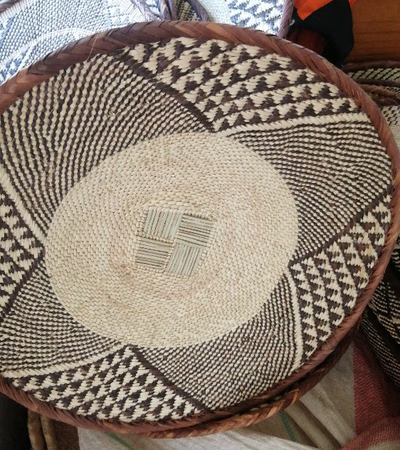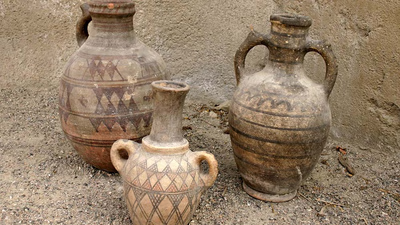
How do B2B platforms enhance the trade of decorative arts in West Asia?
The decorative arts sector in West Asia and the Middle East is thriving, driven by strong cultural heritage and growing global demand for handmade and antique items. Through advanced B2B trade platforms, exporters and importers are seamlessly connecting to market traditional arts and crafts, including carpets, handmade bags and shoes, folk costumes, statues, furniture, paintings, manuscripts, and jewelry. Verified exporters and importers are leveraging regional product listings and supply chain solutions to navigate the complexities of international trade. Handmade carpets and rugs, particularly from West Asia, remain a cornerstone of the region’s trade. These products are not only valued for their craftsmanship but also for their cultural significance. B2B marketplaces facilitate their marketing by offering direct communication channels between buyers and sellers, enabling competitive pricing and broader market reach. Antique jars, decorative vases, and traditional vessels represent another lucrative niche. Through targeted advertising and market insights, West Asian exporters are accessing global markets eager for unique items with historical value.
Similarly, the trade in old manuscripts and handwritten books is gaining traction, appealing to collectors and educational institutions worldwide. The furniture market is also expanding, with handmade wooden products from Asia becoming highly sought after for their quality and artistry. Traditional handmade bags, shoes, and folk costumes add diversity to the portfolio, attracting buyers interested in cultural authenticity. Statues and sculptures, ranging from antique collectibles to modern creations, are becoming a focal point in international art trading. These items, alongside artistic handmade jewelry, are marketed effectively through AI-driven platforms like Aritral, which assist with product listing, global sales, and trade advertising. As the decorative arts industry evolves, the Middle East and West Asia are positioning themselves as premier hubs for exporting cultural and artistic goods to the world, fostering business networking and economic growth.
-
 Mohamed Ali 1 months ago
Mohamed Ali 1 months ago Egypt
Plaques and Artistic Works with Heritage
Egypt
Plaques and Artistic Works with Heritage
These are artistic works of various sizes, and there are plaques that indicate heritage and the finest detailsDetails
-
 Almas Astone 2 months ago
Almas Astone 2 months ago Iran
Export of all stone building products
Iran
Export of all stone building products
Production of various stone building products. Internal wall panels, external facade, production of various artificial stones including nano cement pl...Details
-
 Mohammad Maatouk 2 months ago
Mohammad Maatouk 2 months ago Lebanon
Wood
Lebanon
Wood
The products we work with are guaranteed 100% and are certified with trust and time.Details
-
 Genotejaratkhalijfars 3 months ago
Genotejaratkhalijfars 3 months ago Iran
Dried Fruits and Spices, Dates, Medicinal Herbs, Traditional Clothing, Jam and Honey, Various Pickles and Various Handicrafts
Iran
Dried Fruits and Spices, Dates, Medicinal Herbs, Traditional Clothing, Jam and Honey, Various Pickles and Various Handicrafts
All mentioned items are made from the best and highest quality, and as much as possible from completely organic products or materials.Details
-
 Abdul Wahab 3 months ago
Abdul Wahab 3 months ago India
Oud wood, Wooden Furniture, Carved Furniture, Wooden Handicraft Products
India
Oud wood, Wooden Furniture, Carved Furniture, Wooden Handicraft Products
At Woody Planet, we're passionate about helping you create a home that reflects your unique style and personality. Your living space should be a sanct...Details
-
 Zorof Chubi Gardo 3 months ago
Zorof Chubi Gardo 3 months ago Iran
Wooden Utensils
Iran
Wooden Utensils
Manufacturer of wooden utensils made from the best walnut trees with high quality and durabilityDetails
-
 Bilal 5 months ago
Bilal 5 months ago Jordan
Precious Stones Ruby Diamond Agate Emerald
Jordan
Precious Stones Ruby Diamond Agate Emerald
We have Yemeni agate stones, ruby, emerald, amber, coral.Details
-
 Atef Hassan 6 months ago
Atef Hassan 6 months ago Egypt
Furniture
Egypt
Furniture
All products are made in EgyptDetails
-
 Omar Ahjar Karima 8 months ago
Omar Ahjar Karima 8 months ago Saudi Arabia
Agate
Saudi Arabia
Agate
Natural agate stone with beautiful color interference, tested with a laboratory certificate size and details with a certificateDetails
-

 Iraq
Natural Jewelry and Gemstones
Iraq
Natural Jewelry and Gemstones
Selling natural gemstones at Markaz Mas Al-Janoub Lil-Siyaghat Wal-Mujawharat Wal-Ahjar Al-Karimah in Iraq through direct shopping or delivery service...Details
-
 إيناس الشافعي 11 months ago
إيناس الشافعي 11 months ago Egypt
Vases
Egypt
Vases
Vase with golden handles depicting Romeo and Juliet - Over 40 years old - New - JAPANDetails
-
 Gemstone 3 days ago
Gemstone 3 days ago India
Handicraft
India
Handicraft
Carpet and handicraft and some type of incenceDetails
-
 Art And Crafts 3 days ago
Art And Crafts 3 days ago Zimbabwe
Binga baskets
Zimbabwe
Binga baskets
Binga baskets mainly used as a decorative wall hanging is also used as serve aids.Details
-
Exploring the Antique Trade Market in West Asia and the Middle East

The antique market in West Asia and the Middle East is thriving, driven by a rich cultural heritage and demand for unique handcrafted items. These regions offer unparalleled opportunities for trade in antiques and handicrafts, ranging from handmade bags and shoes to carpets, decorative arts, folk costumes, statues, sculptures, furniture, paintings, manuscripts, and handmade jewelry. The Middle East serves as a hub for trading antiques tied to Islamic civilization and traditional Middle Eastern culture. The value of these antiques, such as ancient manuscripts and traditional rugs, continues to rise due to their historical and artistic significance. Buyers and sellers can leverage online B2B marketplaces across Asia, including the Middle East, to access verified exporters, importers, and regional product listings. Platforms dedicated to antiques and handicrafts provide supply chain solutions and market insights, simplifying international trade. Items like handwoven carpets and hand-embroidered clothing are particularly popular, as they showcase the artistry and craftsmanship of the region. Similarly, decorative arts, including antique vases, jars, and vessels, have high demand among collectors and traders.
Global interest in artistic handmade jewelry and wooden furniture is also significant, with West Asia acting as a pivotal player in connecting these unique products to international markets. The trade of antique statues and sculptures, along with paintings and manuscripts, demonstrates the region"s strong position in art and cultural exports. The most valuable antiques often belong to the Middle East, reflecting centuries of craftsmanship and artistic evolution. Through platforms like Aritral, businesses can streamline the buying, selling, and marketing of such items, ensuring access to reliable partners and expanding trade networks. By tapping into the Middle East’s diverse markets, businesses can unlock economic potential in the antique and handicraft sectors, fostering growth in regional and global trade. "
-
Thriving Decorative Arts Trade in Middle East & West Asia

The decorative arts sector in West Asia and the Middle East is thriving, driven by strong cultural heritage and growing global demand for handmade and antique items. Through advanced B2B trade platforms, exporters and importers are seamlessly connecting to market traditional arts and crafts, including carpets, handmade bags and shoes, folk costumes, statues, furniture, paintings, manuscripts, and jewelry. Verified exporters and importers are leveraging regional product listings and supply chain solutions to navigate the complexities of international trade. Handmade carpets and rugs, particularly from West Asia, remain a cornerstone of the region’s trade. These products are not only valued for their craftsmanship but also for their cultural significance. B2B marketplaces facilitate their marketing by offering direct communication channels between buyers and sellers, enabling competitive pricing and broader market reach. Antique jars, decorative vases, and traditional vessels represent another lucrative niche. Through targeted advertising and market insights, West Asian exporters are accessing global markets eager for unique items with historical value.
Similarly, the trade in old manuscripts and handwritten books is gaining traction, appealing to collectors and educational institutions worldwide. The furniture market is also expanding, with handmade wooden products from Asia becoming highly sought after for their quality and artistry. Traditional handmade bags, shoes, and folk costumes add diversity to the portfolio, attracting buyers interested in cultural authenticity. Statues and sculptures, ranging from antique collectibles to modern creations, are becoming a focal point in international art trading. These items, alongside artistic handmade jewelry, are marketed effectively through AI-driven platforms like Aritral, which assist with product listing, global sales, and trade advertising. As the decorative arts industry evolves, the Middle East and West Asia are positioning themselves as premier hubs for exporting cultural and artistic goods to the world, fostering business networking and economic growth.
-
Exploring the Thriving Folk Costume Trade in West Asia

Folk costumes, particularly traditional hand-embroidered clothing, are a cornerstone of cultural and economic exchange in West Asia and the Middle East. These garments, rich in artistic heritage, represent not only clothing but a form of decorative art deeply embedded in regional identities. The trade and marketing of these folk costumes have witnessed significant growth, fueled by dedicated B2B marketplaces that connect verified exporters and importers across Asia. Platforms like Aritral provide a seamless interface for regional product listings, facilitating direct communication and AI-powered marketing strategies tailored to this niche sector. The Asian local handmade clothing market, especially in West Asia, thrives on the demand for unique, handcrafted items that blend tradition with artistry. From intricate embroidery techniques to the use of premium materials, these clothes attract international buyers seeking authenticity and cultural significance. Verified suppliers leverage trade advertising platforms and supply chain solutions to ensure efficient export processes, meeting global demand while preserving the craft"s integrity. Additionally, the trade of folk costumes is closely linked with other artisan industries, such as handmade bags, shoes, jewelry, and decorative arts.
These industries collectively contribute to a vibrant economic ecosystem in the Middle East. For instance, the markets for antique statues, sculptures, and manuscripts often intersect with clothing trade, enhancing the appeal of regional fairs and exhibitions as hubs for networking and business growth. The distribution models for these artisanal goods often align with the principles of ethical trade, prioritizing fair compensation for artisans. Buyers and sellers benefit from curated market insights that highlight emerging trends, such as the increasing popularity of traditional hand-embroidered clothing among global fashion enthusiasts. Whether through direct sales or export-oriented strategies, the folk costume trade in West Asia remains a symbol of cultural preservation and economic opportunity. "
-
Exploring Handmade Furniture and Wooden Products Trade in West Asia

The furniture trade in West Asia and the Middle East is experiencing dynamic growth, driven by the region"s increasing demand for handmade wooden furniture and artisanal products. This market reflects a cultural appreciation for craftsmanship, combining utility with aesthetics. The Asian handmade wooden products market thrives on connecting verified exporters and importers via B2B marketplaces, facilitating the exchange of high-quality goods that resonate with global buyers. Regional product listings and market insights from platforms like Aritral allow businesses to identify lucrative export opportunities, while AI-powered marketing enhances visibility for artisanal goods. Handmade furniture and wooden products, such as intricately designed chairs, tables, and cabinets, cater to international buyers seeking unique design and superior quality. The Middle East trade platform supports the industry by connecting artisans, exporters, and buyers, ensuring transparency and efficiency in supply chains. Verified exporters showcase products ranging from antique styles to modern interpretations, meeting diverse consumer preferences across West Asia, Europe, and the Americas. Furthermore, B2B platforms play a pivotal role in marketing and branding furniture in export markets.
They provide trade advertising solutions, enabling sellers to reach niche audiences. These platforms also offer business networking opportunities, helping traders connect with regional and global players to expand their customer base. In addition to furniture, related artisanal goods like carpets, decorative arts, and handicrafts complement the regional trade portfolio. Handmade products such as jewelry, bags, and shoes, along with statues and sculptures, reinforce the appeal of West Asia"s artisanal market. By leveraging supply chain solutions and curated listings, businesses can efficiently tap into export markets and deliver unique cultural goods worldwide. Platforms such as Aritral simplify this process through tools like direct communication, global sales assistance, and AI-powered product promotion, making it easier for traders to navigate international markets effectively.
-
Thriving Handicraft Trade in West Asia & Middle East

Handicrafts have historically played a vital role in the cultural and economic landscape of West Asia and the Middle East, with a thriving market for artisanal goods such as folk costumes, handmade carpets, decorative arts, and more. The region"s rich heritage and skilled craftsmanship provide global opportunities for traders and exporters, particularly through emerging B2B platforms and trade solutions. Folk costumes, representing the rich cultural identity of West Asia, are seeing increased demand globally. B2B marketplaces in Asia serve as effective platforms to connect artisans with international buyers, driving the trade of hand-embroidered clothing and traditional wear. Verified exporters and importers leverage these platforms to market folk costumes across borders while gaining insights into regional trends. The handmade carpet trade, a cornerstone of the decorative arts sector, has achieved significant growth in the Middle East. Intricate handwoven rugs and carpets are marketed internationally via B2B channels, enhancing export opportunities and streamlining supply chain solutions. These platforms also facilitate the trade of antique jars, old dishes, and other decorative items, showcasing the region"s artistic legacy.
Handmade bags, shoes, and accessories further enrich the handicraft market, with buyers drawn to their authenticity and craftsmanship. Similarly, statues, sculptures, paintings, and manuscripts are highly sought after for their artistic and historical value. B2B marketplaces in the Middle East simplify buying and selling these items, ensuring access to verified traders and diverse regional product listings. The trade of handmade jewelry and antique furniture is another booming sector, with platforms like Aritral empowering businesses to connect globally. These platforms enable artisans to market their goods effectively, harness AI-powered marketing, and manage international sales seamlessly. In conclusion, the Middle East and West Asia handicraft market leverages B2B platforms to bridge gaps between culture and commerce, offering global buyers access to unique artisanal products while supporting local economies.
-
Exploring Global Trade Opportunities for Handmade Jewelry

Handmade jewelry, a cornerstone of the artistic handicraft market, holds immense trade potential in the Middle East and West Asia. The region, known for its rich heritage in decorative arts and folk craftsmanship, is a growing hub for unique handmade accessories. B2B marketplaces in Asia are playing a pivotal role in connecting artisans, verified exporters, and global buyers, enabling seamless trade and fostering international marketing opportunities. Platforms designed for commodity trade in the Middle East allow artisans to showcase their intricate designs alongside other handicrafts, such as handmade carpets, folk costumes, and decorative arts, creating a diverse product ecosystem. The demand for handmade jewelry is driven by its cultural significance and modern consumer trends favoring bespoke and sustainable luxury items. Verified exporters leverage regional product listings and market insights to tap into the global appetite for these artisanal goods. Artisans and small businesses gain access to competitive supply chain solutions, enabling them to scale operations and meet international demand. Moreover, the integration of online trade advertising platforms facilitates the promotion of these unique pieces to a global audience.
The handmade jewelry sector thrives alongside other artisanal trades, such as handmade bags, antique furniture, and statues, illustrating the interconnectedness of cultural goods markets. By leveraging regional trade solutions, exporters from West Asia have enhanced their presence in global markets, positioning handmade jewelry as a symbol of craftsmanship and heritage. International marketing efforts, supported by AI-driven B2B solutions like Aritral, further bolster the sector by simplifying product listings, global sales management, and targeted advertising. These strategies not only connect global markets but also highlight the value of preserving traditional artistry in an increasingly digital world.
-
Exploring the Trade of Handmade Bags and Shoes in West Asia

The trade of handmade bags and shoes in the Middle East and West Asia is on an upward trajectory, driven by a rising demand for authentic, artisanal goods. These regions have long been recognized for their vibrant tradition of handicrafts, including folk costumes, carpets, and decorative arts, and the market for handmade bags and shoes is no exception. B2B marketplaces in Asia are playing a pivotal role in connecting artisans with international buyers, offering verified exporters and importers a platform to showcase their work through regional product listings. These platforms are also helping bridge the gap between supply and demand by providing market insights, supply chain solutions, and trade advertising opportunities tailored to the unique needs of these artisanal sectors. One of the key factors driving this market is the global appreciation for cultural authenticity and craftsmanship. Handmade bags and shoes, often inspired by traditional designs seen in folk costumes or crafted with techniques akin to handwoven carpets, are increasingly sought after in global markets. Middle Eastern exporters are leveraging online B2B platforms to market these products more effectively, allowing them to compete on a global scale. Verified trade networks ensure that buyers have access to genuine, high-quality goods, while supply chain solutions simplify the complexities of cross-border commerce.
The Middle East and West Asia also benefit from their rich history in decorative arts, including statues, sculptures, and antique furniture, which complements the appeal of their handmade bags and shoes. By tapping into the booming e-commerce and trade advertising platforms, artisans and traders can showcase their products to a larger audience, creating new opportunities for growth. Platforms like Aritral are streamlining this process by offering direct communication tools, AI-powered marketing, and global sales assistance, enabling small-scale artisans to thrive in competitive markets. As the demand for handmade goods continues to grow, these platforms are proving crucial in supporting the export of traditional bags and shoes to world markets.
-
Antique Manuscript Trade in West Asia: Trends and Insights

The trade of antique manuscripts and old handwritten books in West Asia is witnessing a remarkable surge, driven by their cultural and historical significance. These manuscripts, often adorned with intricate calligraphy, hold immense value in the antiques market. As cultural artifacts, they attract collectors, historians, and institutions globally. Their trade is facilitated by platforms offering product listings, verified exporter-importer networks, and market insights. The Middle East’s thriving B2B ecosystem plays a pivotal role in connecting buyers and sellers of these unique items. Verified exporters leverage modern supply chain solutions to ensure the secure exchange of such delicate commodities. Regional listings on trade platforms showcase a wide variety of manuscripts, from religious texts to scientific treatises, reflecting the rich legacy of the region. In addition, the market benefits from trade advertising and networking opportunities, providing visibility to niche sellers.
The demand for old manuscripts complements the broader trade of folk costumes, carpets, decorative arts, and handicrafts in West Asia. This interconnected ecosystem thrives on platforms designed to simplify international trade by offering direct communication, AI-powered marketing, and global sales assistance. For instance, the trade of handmade items like furniture, jewelry, and sculptures mirrors the appeal of manuscripts in terms of craftsmanship and cultural significance. Aritral, an AI-driven B2B platform, is at the forefront of this trade transformation. It simplifies the process of buying and selling rare and antique goods, including handwritten books, through its advanced tools for profile management and marketing. By addressing the niche market of antique manuscripts, these platforms enable West Asian countries to preserve their heritage while contributing to global trade growth.
-
Thriving Middle Eastern Painting Trade Market

The Middle Eastern painting trade market has emerged as a vibrant hub for buying, selling, and marketing authentic artworks. Paintings, deeply ingrained in the cultural fabric of West Asia, offer a unique blend of traditional styles and modern interpretations, drawing interest from collectors and enthusiasts worldwide. B2B marketplaces across Asia are central to facilitating this thriving trade, connecting verified exporters and importers through regional product listings and robust supply chain solutions. Platforms such as Aritral simplify the global marketing and export of painting artworks by offering direct communication channels and AI-powered strategies. The trade dynamics of Middle Eastern paintings often intersect with other artisanal sectors like decorative arts, antique manuscripts, and handmade furniture. Galleries, auctions, and online trade platforms have become key players in showcasing and selling authentic art pieces, particularly in West Asia. These platforms provide reliable market insights, enabling buyers and sellers to navigate pricing trends and demand fluctuations. Additionally, they support the export of unique cultural goods, such as folk costumes and carpets, through tailored advertising aimed at international audiences.
Verified trade networks ensure authenticity and quality, minimizing risks in the export market. Moreover, the integration of AI-driven solutions helps optimize marketing campaigns for artists and galleries, bringing their works to global buyers. In West Asia, painting auctions and exhibitions thrive as cultural events, further elevating the economic value of these artworks. As the demand for Middle Eastern art grows, leveraging B2B solutions for seamless trade and efficient supply chain management remains pivotal. Aritral, an AI-driven B2B platform, plays a supporting role by simplifying international trade in commodities and cultural goods, including paintings. Its innovative tools enable businesses to enhance their global sales efforts and connect directly with verified partners, ensuring trust and transparency in the trade process.
-
Thriving Trade of Statues and Sculptures in West Asia

The trade of statues and sculptures in West Asia has emerged as a cornerstone of the region"s thriving art and cultural export market. From antique statues to modern art sculptures, this sector bridges the historical and contemporary, catering to both collectors and businesses worldwide. B2B platforms, such as specialized Middle East trade platforms, play a pivotal role in connecting exporters, buyers, and artisans by offering verified networks and regional product listings. These platforms streamline commodity trade in the Middle East by providing supply chain solutions and facilitating transactions with verified exporters and importers. The statue market in West Asian countries is particularly vibrant, driven by growing demand for both antique sculptures and modern artistic expressions. International buyers are increasingly drawn to the unique craftsmanship of the region, ranging from traditional figurines to contemporary sculptures. Asia"s international sculpture market has also seen significant growth due to advancements in trade advertising platforms and business networking opportunities. These tools enhance the visibility of sculptural art as a craft, whether for decorative arts, religious purposes, or modern design.
Moreover, trade challenges such as marketing and exporting statues are addressed through AI-powered tools and market insights. Verified networks provide trust, while regional product listings and targeted trade advertising ensure effective matchmaking between sellers and global buyers. This ecosystem also benefits complementary art trades like handmade jewelry, decorative arts, and antique manuscripts, further boosting the regional economy. Platforms like Aritral amplify these efforts by simplifying the international trade process for statues and sculptures, offering global sales assistance and AI-powered marketing tools. As West Asia continues to emerge as a hub for cultural goods, leveraging B2B solutions will remain critical to sustaining and expanding the market for aesthetic and artisanal products.
-
Thriving Trade of Handmade Carpets and Rugs in West Asia

The Middle East and West Asia have long been recognized as hubs for the trade of handcrafted carpets and handwoven rugs. These intricately designed pieces serve as cultural artifacts, combining artistry with utility, and are highly sought after in global markets. The demand for handmade carpets often stems from their uniqueness, durability, and historical significance, which make them valuable commodities in the international trade of handicrafts and antiques. The market of handmade carpets thrives through B2B marketplaces and trade platforms in the Middle East, which connect verified exporters and importers. These platforms facilitate seamless trading by offering regional product listings, supply chain solutions, and trade advertising opportunities. Factors such as the authenticity of designs, materials, and weaving techniques significantly influence the value of handwoven carpets. Methods of verifying authenticity—often involving expert appraisal or traceability systems—are critical in maintaining buyer trust. While carpets differ from rugs in size and use, both products are integral to the decorative arts industry.
West Asia’s historical mastery in carpet weaving, dating back centuries, plays a pivotal role in the global perception of these products. Trade in handmade carpets is further enhanced by online platforms that offer market insights and direct communication between buyers and sellers. The supply and demand for handwoven carpets are influenced by global trends, such as the rising appreciation for sustainable and artisanal goods. Marketing efforts in the region often highlight the cultural and artistic value of these carpets, making them appealing to collectors and interior designers worldwide. Aritral, an emerging AI-driven B2B platform, supports international trade by simplifying these processes, ensuring efficient communication, and assisting global sales through AI-powered marketing solutions.
-
Investigating the export market of artistic handmade containers and jars in the world

The global arts and crafts market exhibits significant variability, with demand influenced by local preferences and cultural significance. Popular styles often reflect a blend of traditional and modern designs, appealing to diverse customer tastes. Countries like Iran, China, India, Turkey, Italy, France, the United States, and Japan showcase rich artistic heritages that contribute to the popularity of decorative works such as jars and containers. Traditional artworks often carry historical depth and cultural value, attracting collectors interested in preserving heritage. Conversely, modern decorative pieces appeal to those seeking innovative designs and materials. The choice of materials—wood, pottery, ceramics, metals, and glass—further influences market demand based on aesthetic preferences. Understanding these dynamics is crucial for stakeholders in the Middle East trade platform and B2B marketplaces across Asia as they navigate the commodity trade landscape.
-
Introducing artistic vases and traditional handmade dishes and decorative jars

Artistic vases, jars, and handmade dishes play a significant role in interior decoration and handicrafts. These items are crafted from various materials including clay, ceramics, glass, metal, and wood, showcasing a range of designs from simple to intricate. They serve as decorative accents in diverse settings such as homes, workplaces, restaurants, and public spaces. The contemporary design approach incorporates modern elements like geometric shapes and minimalistic lines while traditional styles draw inspiration from historical art forms. Handmade art containers not only enhance aesthetic appeal but also support local artisans by promoting unique craftsmanship. The artistic value of these pieces lies in their ability to evoke emotions through their design and decoration. High-quality standards are essential in their production to ensure durability and visual impact. Various artistic styles influence the creation of these items, including classical, Renaissance, and Baroque styles that feature distinct motifs and elaborate decorations.
Materials like clay become resilient through firing processes while glass can be colored or frosted for added effect. Wood and metals also contribute to the diversity of handmade art objects. Overall, these decorative pieces add character to any space while reflecting cultural heritage.
-
A guide to exporting decorative art containers to the world antiques markets

Success in exporting decorative art containers to global antique markets requires effective communication with buyers and dealers, as well as strategic marketing. Establishing networks through international art exhibitions and events is crucial for attracting new clients. Creating an online presence, including a personal website and social media engagement, can showcase artwork effectively. Collaborating with galleries, interior designers, and utilizing online marketplaces like Etsy or eBay can expand reach. Understanding export regulations and ensuring the authenticity of art pieces are vital for compliance and market acceptance. Proper packaging and reliable shipping methods are essential to protect delicate items during transit. Patience and persistence are key in navigating the complexities of the art market, while leveraging expert advice can enhance marketing strategies.
-
Principles of International Marketing of Old Jars and Antique Containers

The global trade of old jars and antique containers is governed by international standards aimed at preserving cultural heritage. UNESCO has established charters to protect these artifacts, which include regulations on trade, export, and import. Countries have laws to prevent smuggling and illegal trade of cultural works, often requiring permits for transactions. Buyers are advised to conduct thorough research on the items, ensuring sellers are credible and that products come with authenticity documentation. Legal assistance may be beneficial during transactions. The value of these antiques is influenced by factors such as age, quality, style, and condition. Proper maintenance is crucial due to their sensitivity to environmental factors. Antique markets serve as commercial hubs for enthusiasts and investors alike, highlighting the significance of these historical pieces in both art collections and interior decoration.































